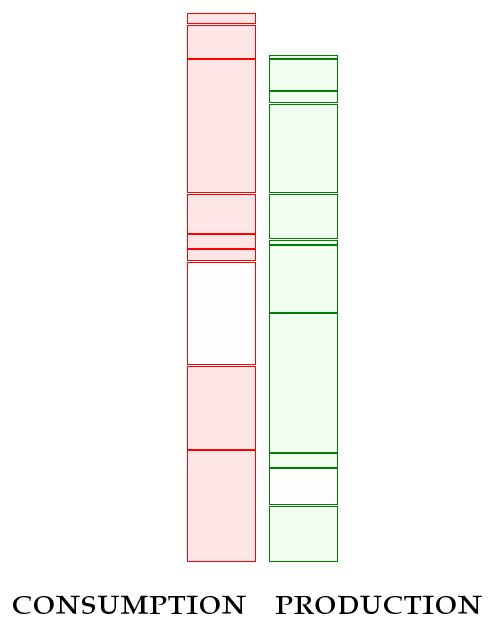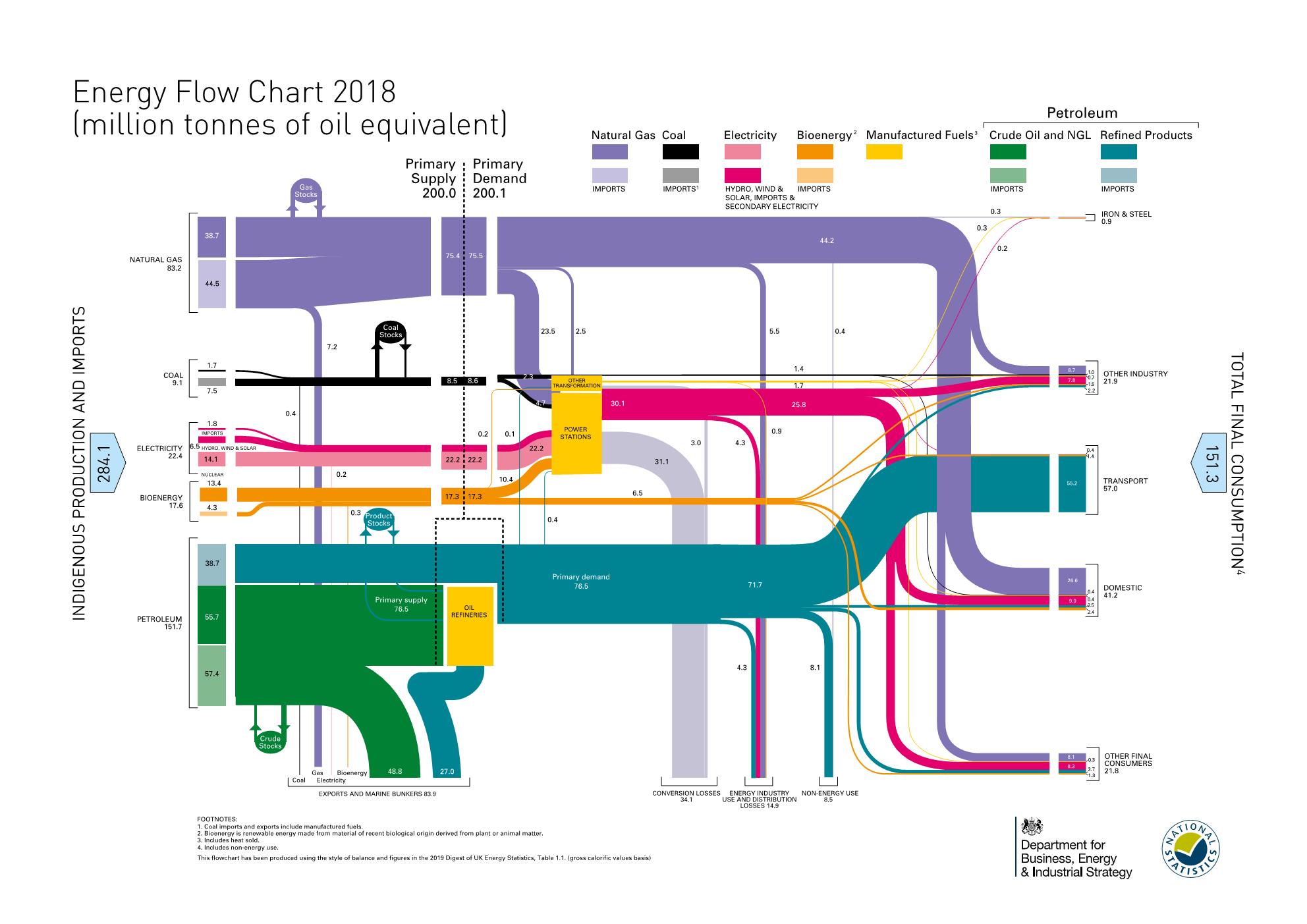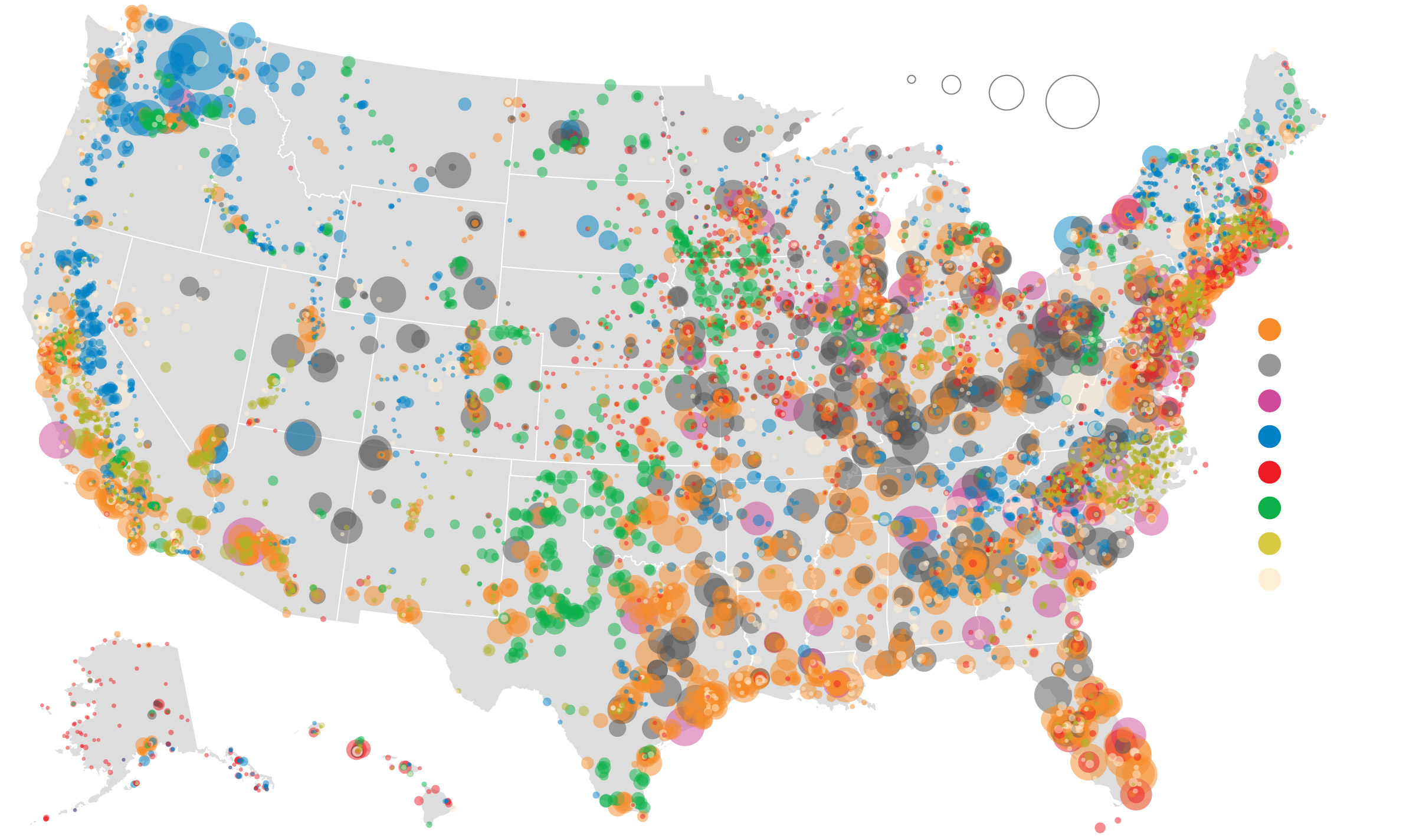Balance Sheet:
Reading:
This unit is based on the chapter on the Balance Sheet from David's book. This is a quick chapter that lays out the broad structure of the text and explains the core unit we will use to discuss energy use.
The Stacks:
You can read about this in the chapter but the core idea is that to understand our energy situation we need to look at both sides of the coin. What we use and where we get it. So that we can appreciate where we use or get most of our energy it seems helpful to use stack plots as the tool for visualizing the data.

There are basically 3 possible outcomes which could be characterized as 'no worries' (A), 'we're toast' (B), and 'it's complicated' (C). What do the stacks look like in each case?
Activity: Discuss, in broad strokes, how this energy investigation could come out. Think of this like the budget for your house. How much difference between the stacks leads to each possible outcome?
HW: Balance Sheet
What is your current belief/expectation of how the stacks will come out for the UK? Does it seem likely that the US will have a similar outcome or a different one? Explain your reasoning. We will revisit this question at the end of the term and hope that you will feel more confident in your answer.
Renewable Energy:
David also takes a moment to consider what makes an energy source renewable. Human history, as a dominant factor in the ecosystem, spans less that 10,000 years. If we hope that humans will be around for another 10,000 years then renewable energy systems are those that are expected to be available continuously for at least that long. This vision of what renewable means makes coal (which might last 600 years) NOT renewable but makes nuclear energy potentially renewable. This is an important consideration in spite of our societal concerns about nuclear energy.
While we will only be exploring a few of these many chapters in David's book consider the titles and what they tell about the range of possibilities:
Wind:
Solar:
Hydroelectricity:
Offshore Wind:
Wave Power:
Tides:
Geothermal:
Solar Power from Space:
Nuclear:
Activity: Discuss which of these seem most likely to be important to us (or the world in general) as a source of renewable energy. Practice explaining why you think what you do. Are there any of them that could meet all of our needs by itself? Hopefully by the end of the term you will feel more confident in your answers and can provide support for your reasoning.
HW: Balance Sheet
What is your personal ranking of the eventual importance of the 9 sources of renewable energy to replacing our current sources of energy with renewable sources. Provide reasons for your top 3. We will revisit this question at the end of the term.
Measuring Energy:
Finally, David discusses a core confusion between power and energy and introduces a standard unit of energy which will allow us to compare different forms of energy.
It's like your paycheck.....
We are all pretty clear about the difference between our hourly wage ( a rate in $/hr) and the money we get in our paychecks. To figure out the size of our paycheck we have to multiply our hourly rate times the hours we worked. $$ = rate*time. That should seem very familiar from our discussions of speed (a rate) and distance. Yes there might be some special corrections due to overtime. People are rarely confused by this calculation.
Power and Energy:
Power and Energy have the same relationship. Power is the rate at which we use energy and is usually reported in Watts (W) or kW, MW, or GW. A watt is 1 J/s which means very little to us and is a very tiny unit. To figure out how much energy we have used we must multiply power by time. Energy = Power*time!! A 1 kW heater running for 1 hr uses 1 kW-h of energy (rate = 1 kW, time = 1 hr). A 40 W light bulb running for 24 h is also 1 kWh (actually 960 W but close enough). Look at your electric bill and you will see that this is what you buy from Pacific Power (kWh). Each kWh costs less than $0.10 here in the NW. Some places on the west coast electric energy costs close to $0.25/kWh and in Hawai'i it's nearly $0.35/kWh.
Take Home:
Energy = Power x time
kWh = kW x h
HW: Balance Sheet
The backup heating system at my house uses energy at a rate of 50 kW. If it runs for 8 hrs during a winter day what does that cost me here in Oregon?
Big Picture for the US:
Here are some big picture plots of how things currently happen here in the US. We're not going to dig into these too much at this point but it will help us get a sense of the scale of things.
Total Energy Use in the US:

A couple of folks asked about the equivalent energy plot for the UK since that is David's focus in the book. Here is the most recent (2018) one that I could find. Notice that the units are different and the layout is a bit different but many of the general features are the same.

Current Sources of Energy in the US:
This wonderful graphic comes from a Washington Post article. Some of the labels got clipped when I embedded the graphic but you can follow the link to the article to read more deeply.

Assignment: HW Balance Sheet
Complete and assemble your solutions to all (3) the HW problems listed here showing all the steps in your solutions. Scan to a pdf and turn in on LMS. Please review HW format expectations for guidance about your homework solutions.
Reading Ahead:
Next you will read the chapter on Cars from David's book before we start the next discussion. This chapter takes a very broad view of energy usage by car owners. We will explore more technical details of cars and energy in the tech chapter.
